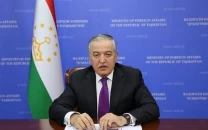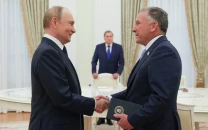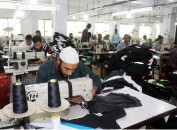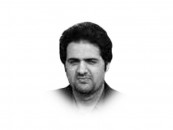Why is Iran's Fordow nuclear site in Israel's crosshairs?
Fordow, Iran's most secure nuclear facility, was left unaffected in the initial wave of Israel's unprovoked attacks

Fordow, Iran’s most heavily fortified nuclear facility, is increasingly at the centre of Israeli military calculations as tensions mount over Tehran’s uranium enrichment programme.
Nuclear fortress under the mountain
Buried deep within a mountain near the city of Qom, Fordow houses nearly 3,000 advanced centrifuges across two underground enrichment halls, according to CNN.
The site is shielded by layers of rock, tunnel systems and security perimeters, making it one of the most difficult targets to access using conventional military means.
Built following Israel’s 1981 airstrike on Iraq’s Osirak reactor, Fordow reflects Iran’s efforts to secure its nuclear infrastructure from potential attacks.
JCPOA neutralised Fordow — until Trump pulled out
Fordow was effectively neutralised under the 2015 Joint Comprehensive Plan of Action (JCPOA), which required Iran to strip the site of most of its centrifuges and nuclear material.
However, following US President Donald Trump’s unilateral withdrawal from the deal in 2018 during his first term, Iran resumed enrichment activities at Fordow and pushing uranium purity levels to 60%, just shy of weapons-grade.
That same year, Israeli Prime Minister Benjamin Netanyahu claimed over 55,000 documents, allegedly obtained by Israeli intelligence, included blueprints of Fordow and outlined its purported goal to produce weapons-grade uranium. Iran has always dismissed the claims as fabricated.
Standard bombs fall short against Fordow’s fortress
Unlike above-ground facilities, Fordow cannot be reached by most standard munitions.
During the initial phase of Israel's attack on June 13, the International Atomic Energy Agency (IAEA) confirmed the site was unaffected.
“As of now, the Fordow Fuel Enrichment Plant has not been impacted,” DG @rafaelmgrossi says after further contacts with Iranian authorities. https://t.co/3WmNCSU1W9
— IAEA - International Atomic Energy Agency ⚛️ (@iaeaorg) June 13, 2025
Only the US ‘bunker buster’ can penetrate Fordow’s depths
According to the Wall Street Journal, only the United States possesses a weapon – the 30,000-pound GBU-57 “bunker buster” bomb – capable of penetrating such depths, and the aircraft, the B-2 stealth bomber, to deliver it.
Israel, lacking heavy bombers and denied access to the GBU-57 by US policy, is exploring alternative strategies, according to sources within the country,
These include targeting power sources and surface-level infrastructure supporting the Fordo complex, or even conducting covert operations aimed at disabling entrances or critical systems.
Military officials stress the importance of Fordow due to its advanced enrichment capabilities.
In March 2023, the International Atomic Energy Agency reported uranium enriched to 83.7% at the site—just short of weapons-grade levels.
Fordow presents a more complex challenge because any attack could trigger wider regional conflict. U.S. commanders have warned that striking Fordo may result in radioactive fallout and international condemnation.
Iran insists its nuclear programme remains peaceful, while Israel views Fordo as a critical obstacle to non-proliferation efforts. As diplomatic options narrow, the mountain that shields Fordo may soon lie at the heart of a global geopolitical confrontation.





















COMMENTS
Comments are moderated and generally will be posted if they are on-topic and not abusive.
For more information, please see our Comments FAQ